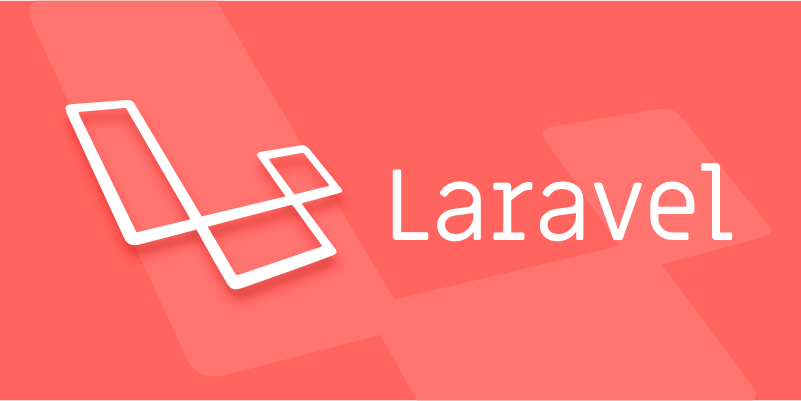How to handle queued event listeners in Laravel?
Implement ShouldQueue to enable queuing; 2. Use php artisan make:listener --queued for automatic setup; 3. Ensure only serializable data like Eloquent models or primitives are used to prevent serialization issues; 4. Customize queue behavior via properties like $connection, $queue, $delay or methods like onConnection(), onQueue(), delay(); 5. Handle failures with the failed() method and control retries using $tries, $backoff, or backoff(); 6. Dispatch events synchronously when needed using Event::fakeFor() or conditional logic; 7. Follow best practices by reserving queuing for heavy tasks, keeping listeners focused, avoiding over-queuing, monitoring performance, and testing serialization—all to ensure optimal performance and reliability in Laravel applications.

In Laravel, queued event listeners allow you to defer the execution of heavy or time-consuming logic—like sending emails, making API calls, or processing data—until after the main request cycle completes. This improves response times and overall application performance.

Here’s how to properly handle queued event listeners in Laravel:
1. Make Listeners Implement ShouldQueue
To queue an event listener, your listener class must implement the Illuminate\Contracts\Queue\ShouldQueue interface.

use Illuminate\Contracts\Queue\ShouldQueue;
class SendWelcomeEmail implements ShouldQueue
{
// This listener is now queued
}Laravel will automatically dispatch the listener job to the queue when the event is fired.
2. Generate Queueable Listeners with Artisan
When creating listeners via Artisan, use the --queued flag:

php artisan make:listener SendWelcomeEmail --queued
This generates a listener that already implements ShouldQueue.
3. Handle Dependencies and Serialization
Queued listeners are serialized and stored in the queue, so you must be careful about what’s injected into the constructor or stored as properties.
- Only include serializable data (e.g., Eloquent model instances, primitive types).
- Avoid injecting closures, PDO instances, or non-serializable objects.
Laravel automatically handles Eloquent models by storing only their primary keys and re-retrieving them when the job runs.
public function __construct(public User $user) { }This works safely because Laravel serializes only the model’s ID and re-fetches it when processing the job.
4. Control Queue Connection, Queue Name, and Delay
You can customize the queue behavior using public properties or methods in your listener:
class SendWelcomeEmail implements ShouldQueue
{
public $connection = 'redis';
public $queue = 'emails';
public $delay = 60; // Delay job by 60 seconds
public function handle(UserRegistered $event)
{
// Send email logic
}
}Alternatively, use methods like onConnection(), onQueue(), or delay() when attaching listeners to events (e.g., in EventServiceProvider):
protected $listen = [
UserRegistered::class => [
SendWelcomeEmail::class,
],
];
// Or dynamically:
Event::listen(UserRegistered::class, SendWelcomeEmail::class);
// With customization:
Event::listen(UserRegistered::class, function ($event) {
SendWelcomeEmail::dispatch($event->user)
->onConnection('redis')
->onQueue('emails')
->delay(now()->addMinutes(5));
});Note: This approach works better with jobs than listeners. For fine-grained control, consider using queued jobs instead of listeners.
5. Error Handling and Retry Logic
Queued listeners follow standard queue job behavior:
- Failed jobs go to the
failed_jobstable if configured. - You can define
failed()method to handle failures:
public function failed($event, $exception)
{
// Log error, notify admin, etc.
}Set retry delays or maximum attempts:
public $tries = 3; public $backoff = 10; // Wait 10 seconds before retry
Or use methods:
public function backoff()
{
return [5, 10, 15]; // Increasing delay
}6. Dispatch Events Synchronously When Needed
Sometimes you need to run listeners immediately (e.g., in tests or specific contexts). Use:
event(new UserRegistered($user)); // Fires queued listeners via queue
Or dispatch synchronously:
Event::dispatch(new UserRegistered($user)); // Still uses queue unless listener isn't ShouldQueue
// To force sync: temporarily disable queueing
Event::fakeFor(function () {
event(new UserRegistered($user)); // Runs immediately
});Alternatively, don’t implement ShouldQueue during local/testing, or conditionally dispatch.
7. Best Practices
- Use queued listeners for slow tasks: Email, notifications, analytics, webhooks.
- Keep listeners focused: One responsibility per listener.
- Avoid over-queuing: Lightweight logic (e.g., logging) should run inline.
- Monitor queue performance: Use Horizon or Scout to track job throughput.
- Test thoroughly: Ensure serialization works and models aren’t lost.
Summary
To handle queued event listeners effectively:
- Implement
ShouldQueue - Use Artisan to generate them
- Be cautious with serialization
- Customize queue settings as needed
- Handle failures and retries
- Know when to queue vs. run synchronously
Queued listeners are powerful but should be used judiciously. When in doubt, consider dispatching a dedicated queued job from your listener instead of putting complex logic directly in it.
Basically, Laravel makes it easy—just add ShouldQueue, and the rest is handled by the queue system.
The above is the detailed content of How to handle queued event listeners in Laravel?. For more information, please follow other related articles on the PHP Chinese website!

Hot AI Tools

Undress AI Tool
Undress images for free

Undresser.AI Undress
AI-powered app for creating realistic nude photos

AI Clothes Remover
Online AI tool for removing clothes from photos.

Clothoff.io
AI clothes remover

Video Face Swap
Swap faces in any video effortlessly with our completely free AI face swap tool!

Hot Article

Hot Tools

Notepad++7.3.1
Easy-to-use and free code editor

SublimeText3 Chinese version
Chinese version, very easy to use

Zend Studio 13.0.1
Powerful PHP integrated development environment

Dreamweaver CS6
Visual web development tools

SublimeText3 Mac version
God-level code editing software (SublimeText3)
 What is Configuration Caching in Laravel?
Jul 27, 2025 am 03:54 AM
What is Configuration Caching in Laravel?
Jul 27, 2025 am 03:54 AM
Laravel's configuration cache improves performance by merging all configuration files into a single cache file. Enabling configuration cache in a production environment can reduce I/O operations and file parsing on each request, thereby speeding up configuration loading; 1. It should be enabled when the application is deployed, the configuration is stable and no frequent changes are required; 2. After enabling, modify the configuration, you need to re-run phpartisanconfig:cache to take effect; 3. Avoid using dynamic logic or closures that depend on runtime conditions in the configuration file; 4. When troubleshooting problems, you should first clear the cache, check the .env variables and re-cache.
 Explain Laravel Eloquent Scopes.
Jul 26, 2025 am 07:22 AM
Explain Laravel Eloquent Scopes.
Jul 26, 2025 am 07:22 AM
Laravel's EloquentScopes is a tool that encapsulates common query logic, divided into local scope and global scope. 1. The local scope is defined with a method starting with scope and needs to be called explicitly, such as Post::published(); 2. The global scope is automatically applied to all queries, often used for soft deletion or multi-tenant systems, and the Scope interface needs to be implemented and registered in the model; 3. The scope can be equipped with parameters, such as filtering articles by year or month, and corresponding parameters are passed in when calling; 4. Pay attention to naming specifications, chain calls, temporary disabling and combination expansion when using to improve code clarity and reusability.
 Using the Translator facade for Localization in Laravel.
Jul 21, 2025 am 01:06 AM
Using the Translator facade for Localization in Laravel.
Jul 21, 2025 am 01:06 AM
TheTranslatorfacadeinLaravelisusedforlocalizationbyfetchingtranslatedstringsandswitchinglanguagesatruntime.Touseit,storetranslationstringsinlanguagefilesunderthelangdirectory(e.g.,en,es,fr),thenretrievethemviaLang::get()orthe__()helperfunction,suchas
 How to mock objects in Laravel tests?
Jul 27, 2025 am 03:13 AM
How to mock objects in Laravel tests?
Jul 27, 2025 am 03:13 AM
UseMockeryforcustomdependenciesbysettingexpectationswithshouldReceive().2.UseLaravel’sfake()methodforfacadeslikeMail,Queue,andHttptopreventrealinteractions.3.Replacecontainer-boundserviceswith$this->mock()forcleanersyntax.4.UseHttp::fake()withURLp
 How to implement a referral system in Laravel?
Aug 02, 2025 am 06:55 AM
How to implement a referral system in Laravel?
Aug 02, 2025 am 06:55 AM
Create referrals table to record recommendation relationships, including referrals, referrals, recommendation codes and usage time; 2. Define belongsToMany and hasMany relationships in the User model to manage recommendation data; 3. Generate a unique recommendation code when registering (can be implemented through model events); 4. Capture the recommendation code by querying parameters during registration, establish a recommendation relationship after verification and prevent self-recommendation; 5. Trigger the reward mechanism when recommended users complete the specified behavior (subscription order); 6. Generate shareable recommendation links, and use Laravel signature URLs to enhance security; 7. Display recommendation statistics on the dashboard, such as the total number of recommendations and converted numbers; it is necessary to ensure database constraints, sessions or cookies are persisted,
 How to create a helper file in Laravel?
Jul 26, 2025 am 08:58 AM
How to create a helper file in Laravel?
Jul 26, 2025 am 08:58 AM
Createahelpers.phpfileinapp/HelperswithcustomfunctionslikeformatPrice,isActiveRoute,andisAdmin.2.Addthefiletothe"files"sectionofcomposer.jsonunderautoload.3.Runcomposerdump-autoloadtomakethefunctionsgloballyavailable.4.Usethehelperfunctions
 How to run a Laravel project?
Jul 28, 2025 am 04:28 AM
How to run a Laravel project?
Jul 28, 2025 am 04:28 AM
CheckPHP>=8.1,Composer,andwebserver;2.Cloneorcreateprojectandruncomposerinstall;3.Copy.env.exampleto.envandrunphpartisankey:generate;4.Setdatabasecredentialsin.envandrunphpartisanmigrate--seed;5.Startserverwithphpartisanserve;6.Optionallyrunnpmins
 What is Inertia.js and how to use it with Laravel and Vue/React?
Jul 17, 2025 am 02:00 AM
What is Inertia.js and how to use it with Laravel and Vue/React?
Jul 17, 2025 am 02:00 AM
Inertia.jsworkswithLaravelbyallowingdeveloperstobuildSPAsusingVueorReactwhilekeepingLaravelresponsibleforroutingandpageloading.1.RoutesaredefinedinLaravelasusual.2.ControllersreturnInertia::render()tospecifywhichfrontendcomponenttoload.3.Inertiapasse







